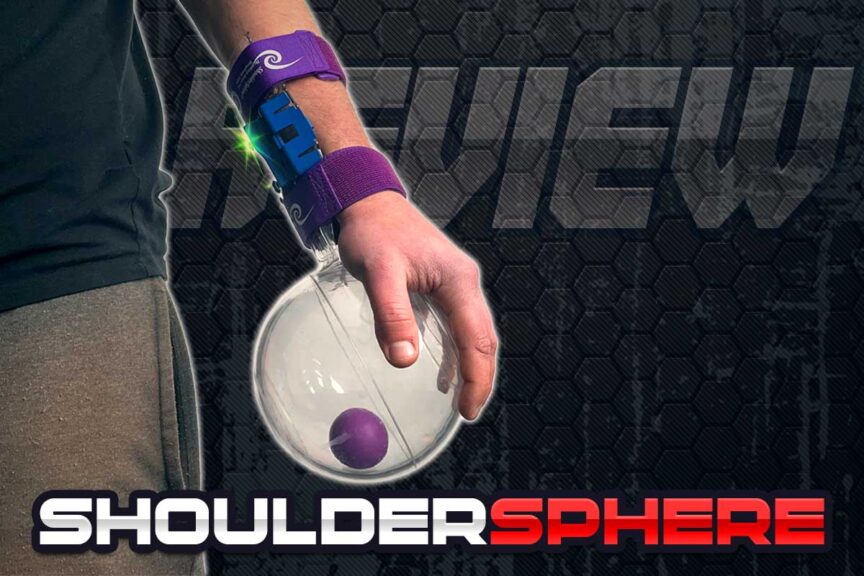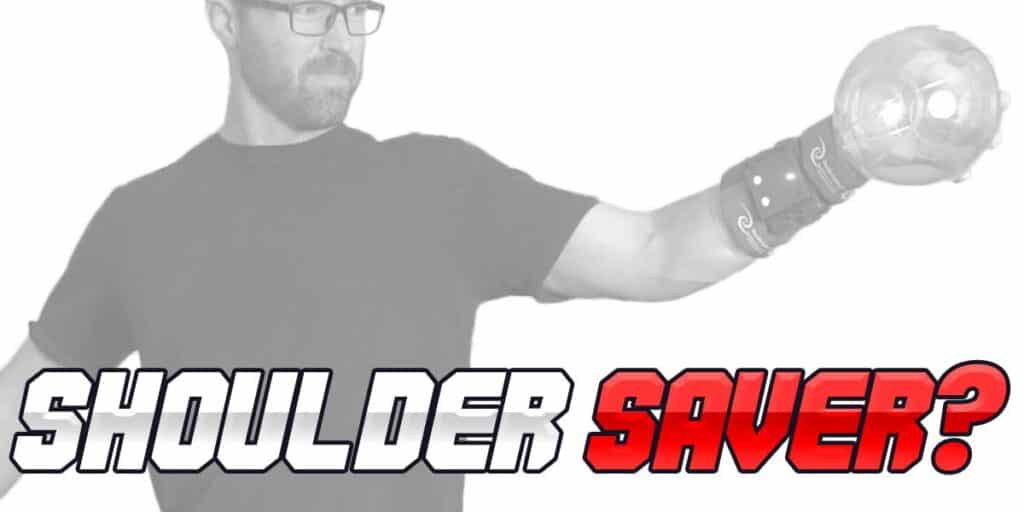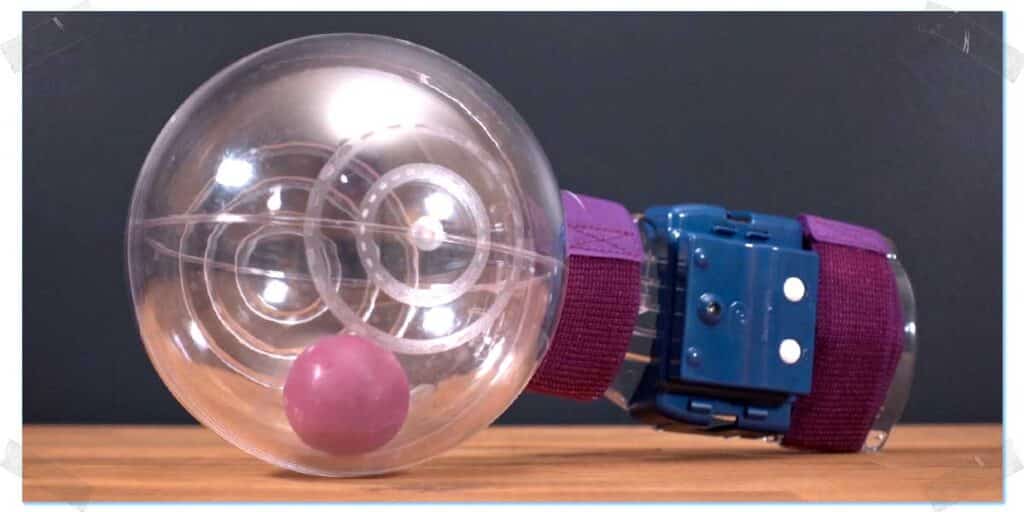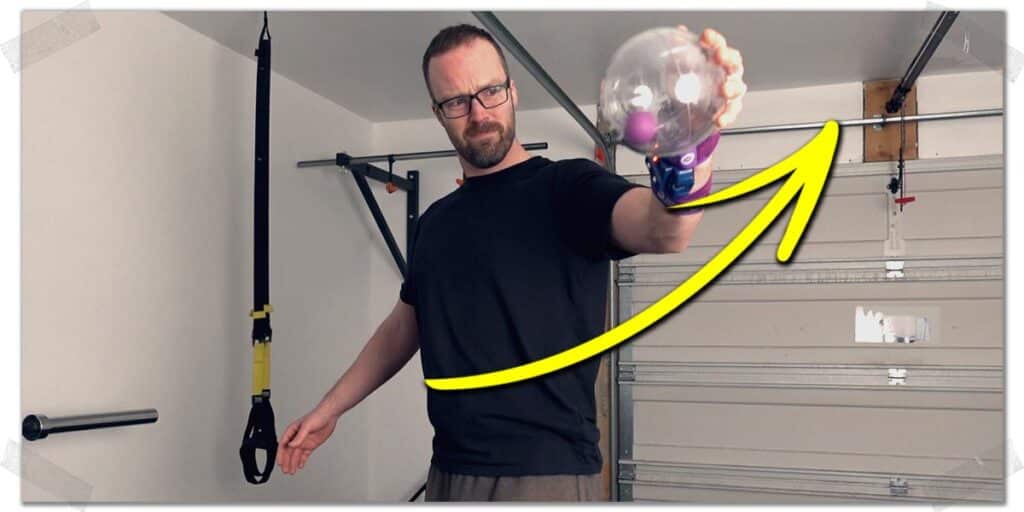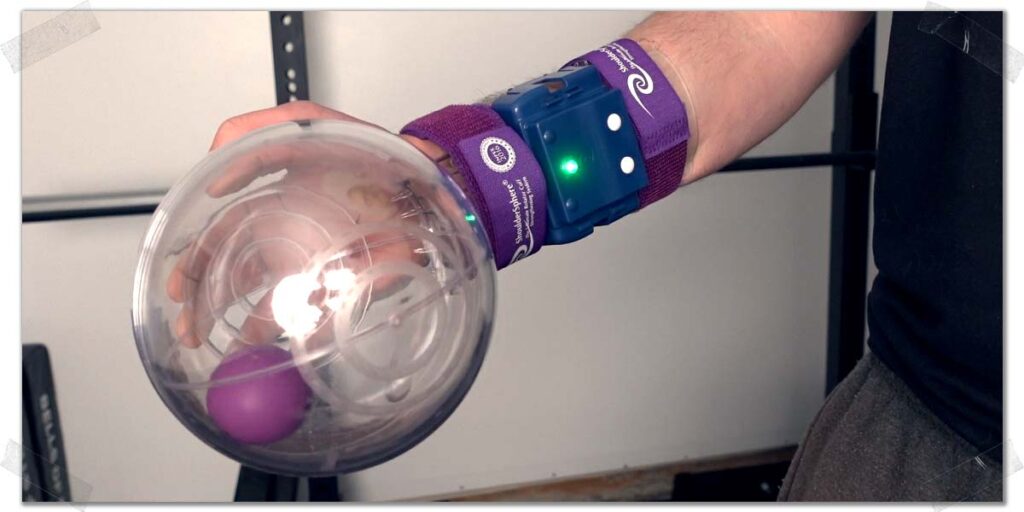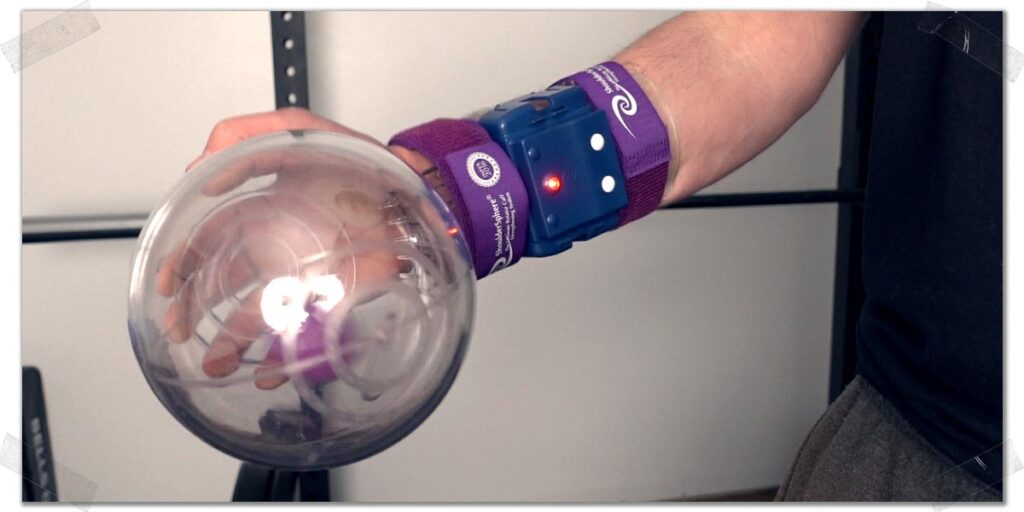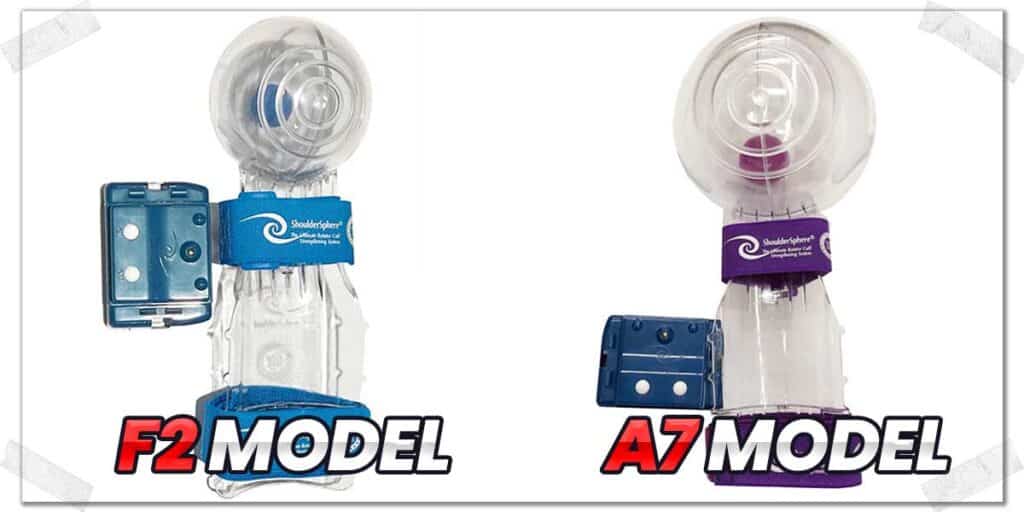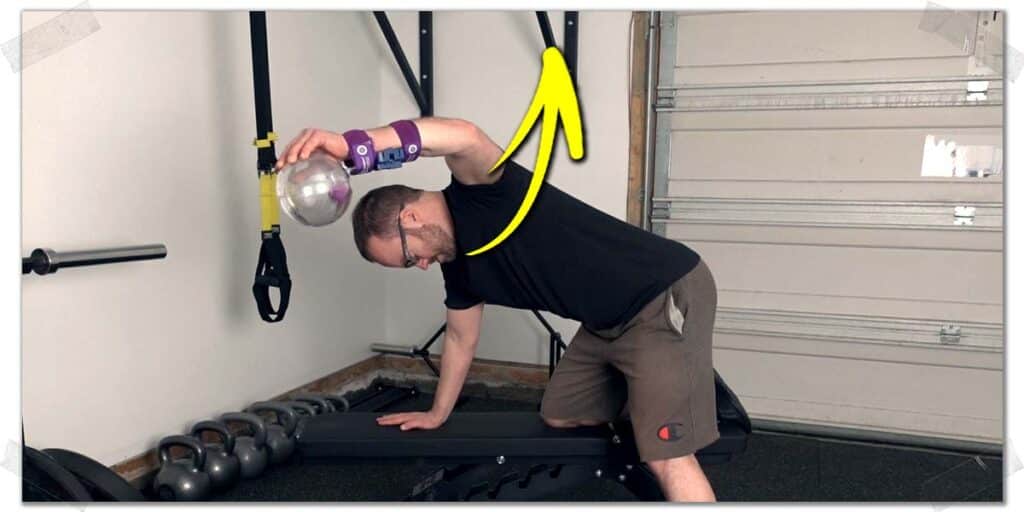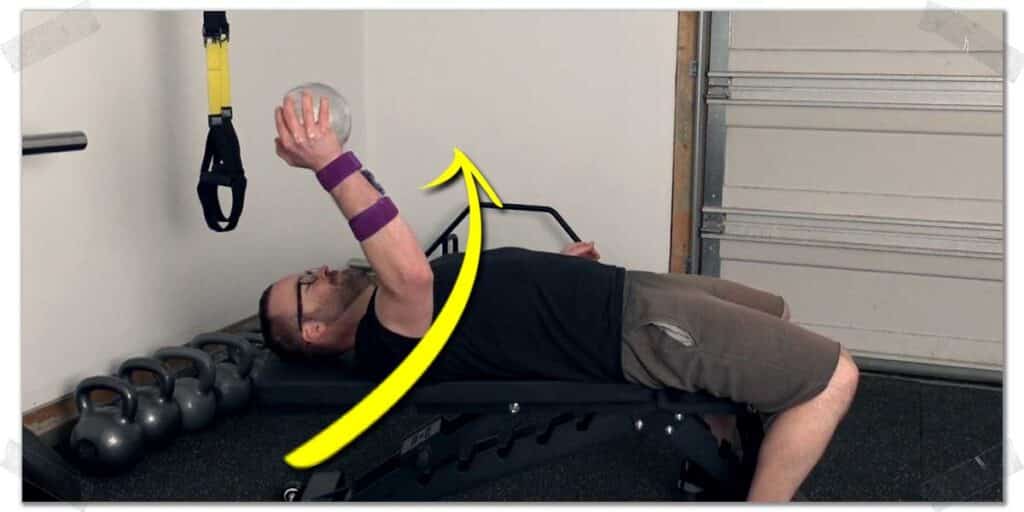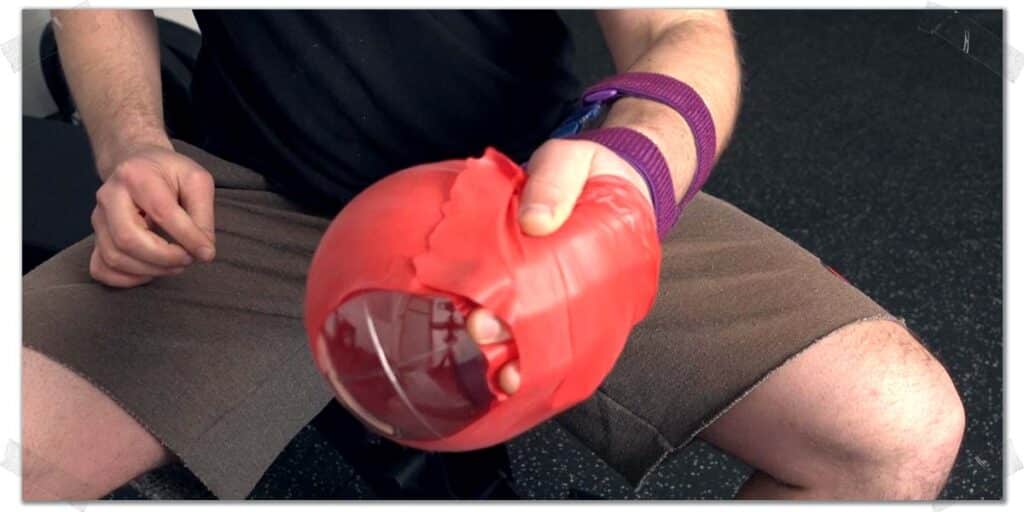I love practical, effective equipment, and I’m a sucker for cool tech, particularly in the injury rehabilitation department…but I’m certainly not a fool—I can tell the difference between a therapeutic product that’s great and one that’s a gimmick.
So when I came across the ShoulderSphere a while back, I was instantly intrigued. Sure, the concept behind how it works made sense, but I would need to feel it for myself before forming a confident, professional opinion. And now that I’ve had my hands (or, should I say, my hand) on the A7 ShoulderSphere, I’ve arrived at a conclusion.
The ShoulderSphere is an outstanding rotator cuff strengthening device for injury prevention and rehabilitation. It provides an effective means to improve strength and endurance of the rotator cuff and general shoulder musculature through numerous movement patterns and exercises.
Having spent some time with the device and experiencing the challenge it can provide the shoulder, I’m able to share a lot of insight regarding the device itself, its applications, and who it’s likely best suited for.
So, assuming you want to learn some surprising and helpful information regarding this device, keep on reading!
Disclaimer: I do NOT have any affiliation with ShoulderSphere. I have purchased this device with my own money, and all thoughts and opinions within this article are my own.
Related content:
A small request: If you find this article to be helpful, or you appreciate any of the content on my site, please consider sharing it on social media and with your friends to help spread the word—it’s truly appreciated!
Gaining confidence: The ShoulderSphere inventor
Right off the hop, one important factor (at least, for me) is knowing that the ShoulderSphere has been designed by a medical professional relevant to the field of orthopedic rehabilitation and shoulder function.
The device has been designed by Dr. Win Chang, MD, who is a former Clinical Assistant Professor of Orthopedic Surgery at New York University Hospital for Joint Diseases, and he has also been fellowship trained in Bio-engineering.
Over my years in sports performance and injury rehabilitation, I’ve come across numerous pieces of home exercise and rehabilitation equipment designed by individuals with less-than-ideal training and education related to the human body, and it often shows in the subsequent products produced.
So, when learning that the ShoulderSphere has been designed by a professional who has devoted their life to understanding the function of the human body, my confidence was placed on a firm foundation upon which all of my future opinions of the device could rest securely.
Off to a good start!
Features: Rotationally-based, proprioception, accelerometers, and more
A few standout features give the ShoulderSphere its unique shoulder rehabilitation and strengthening abilities compared to more traditional pieces of equipment. Let’s quickly run through them to help you appreciate how this device sets itself apart from others.
Rotational-based training
Unlike virtually all other methods of strengthening the shoulder (resistance bands, dumbbells, etc.), which rely on linear-based movements, the ShoulderSphere relies on creating rotational (multidirectional) resistance, which changes how the muscles around the shoulder must engage to meet the challenge of the movement.
Pro Trip: When using the ShoulderSphere, the direction in which you spin the ball does not matter; the rotator cuff muscles will all still be engaged in the same manner.
This results in rapid concentric and eccentric contractions that must take place within multiple muscle groups involved in any exercise being performed. Performing these muscle contractions in multiple planes and through multiple movement patterns makes the ShoulderSphere unique in how it strengthens the rotator cuff.
Proprioceptive training
Proprioception refers to the brain’s ability to feel and interpret the positions and subsequent movements occurring around a given joint. Better shoulder proprioception can reduce injury, particularly for throwing-based athletes and those who rely on their shoulders for athletic-based movements.
Producing co-contraction of shoulder muscles
The ShoulderSphere separates itself from traditional shoulder strengthening equipment through its ability to force the shoulder muscles to undergo co-contraction while either keeping the arm still or when moving it through active ranges of motion.
Pro tip: The term co-contraction refers to the simultaneous muscle contraction that occurs between functionally opposite muscles that cross over a joint (such as the shoulder joint) within the body.
This is where the ShoulderSphere makes its mark as a novel (and effective) device from traditional exercise equipment.
The only other device (at least, that I’m aware of) that is specifically designed to promote co-contraction of the shoulder muscles is the Bodyblade. And while it can do some of the unique things the ShoulderSphere can, it does have a few notable limitations:
- The Bodyblade can’t produce the same number of movement patterns as the ShoulderSphere (throwing patterns, as an example) since the length of the blade will likely get in the way. This is particularly true for exercises that involve pronation and supination twisting) of the forearm while producing shoulder movement (such as PNF patterns).
- The Bodyblade is not nearly as travel-friendly or space efficient as the ShoulderSphere.
To be clear, the Bodyblade is still a great piece of equipment that still warrants plenty of use. Still, the battle of size practicality and movement pattern versatility is easily won by the ShoulderSphere, at least, in my professional opinion.
Built-in accelerometer to measure power output
The little blue box you see on the ShoulderSphere is the housing unit for an accelerometer, which is also called the Personalized Electronic Tracker. It measures the intensity at which your muscles are working when using the device. It’s not necessary to use, but it adds a nice touch to the usefulness by providing real-time feedback to the user regarding the intensity their shoulder is outputting when using the device.
The device has both a red and green light, with each one being displayed based on the intensity at which movements are being performed.
| Model | Red Light RPM | Green Light RPM | Red Light Zone (Power) Equivalent | Green Light Zone (Endurance) Equivalent |
| F2 | >320 RPM | 10-320 RPM | 90 MPH baseball pitch | 60 MPH baseball pitch |
| A7 | >320 RPM | 10-320 RPM | 60 MPH tennis ball throw | 40 MPH tennis ball throw |
According to the ShoulderSphere website, for the A7 model, the red light corresponds to the power behind a 90 mph pitcher’s throw on a baseball mound or a 25 mph punch by a boxer. When the light is green, it corresponds to a 60 mph baseball pitch.
For the F2 model, the red light corresponds to a 60 mph tennis ball throw, while the green corresponds to a 40 mph throw.
For each model, the green light represents training for endurance, while the red light represents training for power.
Big and little brothers: the ShoulderSphere models
There are two models of the ShoulderSphere:
- The F2 model
- The A7 model
Both work through the exact same concept and same usage, with the only difference being the overall intensity or challenge each one provides.
The F2 model uses a smaller globe and lighter ball (4 oz), making it less intense on the shoulder and more ideal for:
- Shoulder maintenance
- Injury recovery
- Post-surgical recovery
The A7 model is the big brother of the F2 model and uses a larger globe and heavier ball (7 oz), making it ideal for:
- Power athletes and throwing athletes
- Dynamic
- Enhancing shoulder performance and endurance
Both models clearly serve a time and place, so if you want to know which one may be best for you, read the following section.
Which model is best for you?
I’ve only used the A7 thus far, but since I am very in tune with my body and know how I stack up to the strength and endurance of other individuals, here’s what I can confidently say:
The A7 model (as stated on the ShoulderSphere website) is definitely best suited for those who have relatively healthy shoulders (with average strength and endurance) and are looking more to maintain their shoulder health or looking to improve upon their currently healthy shoulder abilities. This second point is particularly true for throwing and shoulder-based athletes.
Related article: Here’s How to Workout With Shoulder Bursitis (Do’s & Don’ts)
If, on the other hand, you are not an overly active individual, have a shoulder that gives you discomfort with daily activities, or are rehabilitating a shoulder injury, the smaller and lighter F2 will likely be your best bet.
To learn the in-depth specifics of which model is likely best for you, check out this helpful page on the ShoulderSphere website!
Build quality: what to know
If you’ve read any of my other reviews, you know that I’m a stickler for quality, particularly when spending hard-earned money on a product. I believe companies should take pride in the quality of what they produce and that we, as consumers, should get what we pay for.
The ShoulderSphere strikes a sweet spot of affordability and quality; it doesn’t break the bank and should last the user a rather long time, provided it’s adequately cared for.
Both ShoulderSphere models are built exclusively from plastic, with the exception of the two elastic velcro bands used to secure the device around the forearm.
While the device isn’t built like a tank, it shouldn’t have to be, either. The main issue to watch out for is mishandling it; one decent-height drop onto a hard floor and the sphere might crack, though it will likely still be usable.
Still, your best bet is to handle it with care. If you’re someone who treats your equipment with respect, you shouldn’t have anything to worry about; the ShoulderSphere should hold up just fine whether being used daily in a clinic or for personal home use.
Who it’s for: Ideal ShoulderSphere candidates
So, who is best suited for using the ShoulderSphere? Well, it should come as no surprise that it’s best suited for individuals with shoulder issues or those looking to keep their shoulders healthy, but we can get more specific than that.
Like any other piece of rehabilitative exercise equipment, you’ll need to put in the work to feel and see the improvements in your rotator cuff and shoulder health; this is not a one-time use piece of equipment; it should be thought of as any other workout endeavour, one that takes time and consistent effort to build health back into the shoulder. So, those who are committed to their health and recovery will likely experience the best outcomes.
Additionally, the ShoulderSphere will likely be an ideal fit for those who have dysfunction within their rotator cuff muscles, including conditions such as:
- Tendinosis or tendinopathy in their rotator cuff muscles.
- Generalized deconditioning of the shoulder or rotator cuff.
- Use their shoulders on a daily basis with work or occupational tasks (shoulders that are prone to being overused).
- Throwing-based athletes and highly active individuals.
If you are recently recovering from shoulder surgery or any type of shoulder injury, please be sure to speak with a qualified healthcare specialist to make sure this device is right for you.
A wise purchase? Cost-to-benefit ratio
If you know anything about me, you know that I always advocate for people to spend their money wisely (on exercise equipment and for everything else in life). If similar benefits can be had at a fraction of the price with other equipment, I will advocate that individuals at least start with basic (and most often) inexpensive equipment and progress to more expensive, advanced equipment only when needed.
When it comes to the ShoulderSphere, it’s not necessary to use it right away in the rehabilitation (or injury prevention department), but it will likely be an outstanding adjunct once you’ve progressed through the early stages of rotator cuff strengthening.
Yes, you can attain effective shoulder strengthening with traditional equipment such as dumbbells, Theraband, and resistance tubing, but the ShoulderSphere will provide the ability to produce similar movement patterns while achieving rapid concentric and eccentric contractions of the shoulder muscles (something not attainable with traditional equipment).
As such, it opens a new world of stimulus potential for the rotator cuff in terms of:
- Functional endurance training
- Coordination of the upper extremity (shoulder, upper arm and lower arm)
- Isometric training of the rotator cuff
Pricing of the ShoulderSphere
At the time of publishing this article, the cost of each ShoulderSphere model is:
F2 model: $190 (USD)
A7 model: $250 (USD)
Given the versatility of shoulder training the ShoulderSphere offers and its overall build quality, I consider this a very fair price. If the device did not include the accelerometer, I’d perhaps consider it a bit steep.
All in all, for a device that affords such versatility for injury prevention and rehabilitation, I’ve got no complaints about the ShoulderSphere’s pricing.
Effectiveness: what does the science say?
At this point in time, there’s not much original research done to validate the ShoulderSphere. However, I have come across one journal article that is certainly worth checking out for anyone who is interested:
It’s important to note that while there may not be a lot of original research conducted on the ShoulderSphere, the shoulder rehab concepts and principles that the device uses are widely established and utilized within scientific literature.
These concepts include:
- Incorporating co-contraction-based exercises
- Initially training through smaller ranges of motion and then progressing into larger ranges
- Utilizing functional movement patterns and shoulder positions
- Addressing muscular strength and endurance
As such, with the ShoulderSphere being a device capable of addressing each of these factors, it’s likely a matter of time before studies are conducted to further examine the effectiveness of the ShoulderSphere.
Suggestions: areas for potential improvement
As with many of my other reviews, I try to be as objective as possible when evaluating a product. Regarding the ShoulderSphere, I do not have any particular gripes beyond minor quibbles; overall, it’s a great product. Still, I like to be objective (and constructive) in my reviews.
By no means are any of the minor quibbles below dealbreakers, rather just my personal preferences coming to the surface (you may find them to not be issues at all).
As well, I’ll quickly mention that the following apply to the larger, heavier A7 model; I doubt the following minor gripes would not be present on its smaller, F2 model.
Issue 1: occasional grip loss with dynamic shoulder patterns
Overall, the ShoulderSphere does a more than adequate job of staying secured around the wrist, but I find that the sphere is a bit tricky to keep a firm grasp on when performing dynamic movements such as PNF patterns or throwing patterns. The result can lead to a very awkward motion or disruption of the exercise completely, with the ShoulderSphere now wobbling around the wrist and forearm.
For me, a simple workaround for securing the sphere around my hand is by wrapping some Theraband around the sphere and the back of my hand. It’s simple, quick, and keeps my hand glued to the device.
Keep in mind: I only have this issue for large movements, such as throwing and PNF patterns; it’s not an issue with static exercises or when using smaller ranges of motion for an exercise.
Issue 2: the velcro wrist bands
This isn’t so much of an issue as it is more of an eternal concern that I have with all fitness and rehab equipment I use that has velcro components (the wrist straps, in this case). Velcro is the right material to use here, but it always has a shelf life. As time goes on, it can lose its stickiness. Though I doubt it won’t be anytime soon, it’s a thought that’s always in the back of my mind. It’s no different than my concerns when reviewing the Iron Neck Pro 2.0 and the Iron Neck Pro 3.0.
I do find myself wondering what the device would be like if it were to use a more traditional watchband-like set of straps rather than velcro. It might not be all that better (might even be worse), but I’d be curious to see, as it might get the job done just as well—or perhaps, even better—than velcro itself.
The Final Verdict
I’m a big fan of the ShoulderSphere—both for use on myself and for my patients within the clinic. While I won’t go so far as to say that you absolutely must purchase it, I’ll say that if your budget allows for it, it can be an immensely beneficial device for opening up new avenues of rotator cuff rehab and general shoulder strengthening.
If you’re in the very early stages of rotator cuff rehabilitation or have a healthy but generally weak or deconditioned shoulder, you’ll make great improvements with traditional equipment. Once you feel like you want or need greater variety or versatility in stimulating your rotator cuff, picking up a ShoulderSphere (if your budget allows) will help take your shoulder health to new levels.

Hi! I’m Jim Wittstrom, PT, DPT, CSCS, Pn1.
I am a physical therapist who is passionate about all things pertaining to strength & conditioning, human movement, injury prevention and rehabilitation. I created StrengthResurgence.com in order to help others become stronger and healthier. I also love helping aspiring students and therapists fulfill their dreams of becoming successful in school and within their clinical PT practice. Thanks for checking out my site!

